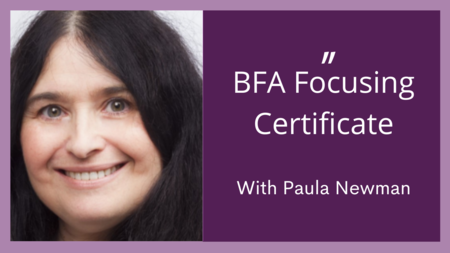Neurodiversity Videos
I hope that you will find my neurodiversity videos informative and helpful.
Is Dyspraxia, a Hidden Disability?
Dyspraxia is also known as developmental co-ordination disorder (DCD). It is a lifelong condition, often present from birth, and sometimes acquired later on through damage to the brain. Messages to the body are not sent out in an efficient manner affecting balance, movement, spacial awareness, and co ordination. People with Dyspraxia struggle with various tasks that others manage easily.
The symptoms and their severity vary from person to person. With practice and over time some difficulties can become less severe and alternative ways of completing tasks such as tying shoelaces may be taught or discovered. Certain activities are more relevant to children than adults, and vice versa. Here are some of the areas where dyspraxic children, adults or both may struggle:
Running, hopping, skipping, jumping, climbing stairs, walking along a street without bumping into other people, lamp posts and anything else in one's path. Learning to swim, to catch a ball and to ride a bike.
Dressing without clothes being worn back to front and inside out. Managing buttons, zips, hooks and shoelaces.
Using small objects such as cutlery, scissors, pens, pencils and keys. Drawing and learning to write.
Difficulties with language and speach. Needing longer than most people to take in a question, formulate an answer and find the words to articulate a reply.
Difficulties with organisation, planning and memory
Having a poor sense of direction, forgetting the way, difficulty understanding maps and following directions.
Learning to drive can be extremely challenging and is not always achieved.
Is Dyspraxia a disability?
I would like to present two ways of viewing this question.
1. Dyspraxic people face many issues, and these can affect education, job prospects, independent living, confidence, physical activities and socialising. There can also be psychological effects such as anxiety, low self esteem and depression.
In the United Kingdom Dyspraxia is recognised as a disability under the 2010 Equality Act. Employers are required to make reasonable adjustments that allow dyspraxic employees to perform their job. Children's educational needs are supported with an Individualised Educational Plan (IEP)
2. The Neurodiversity movement has a different aproach. Dyspraxia and other neurodiverse conditions such as ADHD and Dyslexia are viewed as natural differences in the way that the brain functions rather than disabilities.
Strengths which are associated with neurodiverse conditions are emphaized. Talents which are linked to Dyspraxia include: creativity, empathy, problem solving, innovation and determination to succeed. These qualities can be of benefit in many areas of life. However, society is designed to accommodate the majority of people who are neurotypical and that is the source of Dyspraxic disability.
Personally I agree that Dyspraxic people have strengths that can be of great value to society. I can also see that it is often easier for neurotypical people to thrive and fit in. At the same time, Dyspraxic people are dealing with real physical symptoms which can in themselves be debilitating.
Dyspraxia is not very visible
You would not know that somebody is Dyspraxic by looking at them. Dyspraxic people may choose to hide their differences. Instead of letting others see that ‘simple tasks’ such as reading a map and following directions are problematic they might avoid visiting places which they cannot find.
Some people hide their condition by steering clear of compromising situations such as discussions, interviews and public speaking where they are likely to suffer embarrassment due to poor short term memory and difficulty expressing their thoughts coherently.
Certain symptoms can become less apparent since people learn to adapt over time. They may develop strategies such as using written directions and concentrating very carefully so as to avoid tripping over.
Dyspraxia may not be easily identified since the symptoms and their severity can vary from person to person. For example some but not all dyspraxics have verbal dyspraxia which affects speach.
Furthermore, neurodiverse differences can occur together. For example ADHD and dyspraxia. Since there are some common symptoms such as awkwardness in social situations, dyspraxia might not be identified.
With Dyspraxia there is an uneven spread of abilities.
A pupil's poor grasp of geometry for example may not be seen as significant because the same pupil is clearly very able when it comes to essay writing.
At the same time, many symptoms of Dyspraxia are noticeable and not very easy to hide
In the past Dyspraxia was called 'clumsy child syndrome' because it was evident that children with the condition were prone to tripping over and bumping into people and objects. This is due to poor spatial awareness, poor coordination and weak balance. Dyspraxia continues into adulthood although over time a number of people become better at managing their clumsiness.
For some Dyspraxic people running and walking looks awkward due to poor integration of the right and left sides of the body. In my view it is probable that people do notice these traits because they are difficult to miss, however they may not be attributed to dyspraxia.
Social awkwardness can also be visible. This can include misunderstanding what is being expressed due to literal thinking. With literal thinking it is also difficult to get jokes and therefore to react appropriately. People with Dyspraxia might mistakenly interrupt others in a conversation because it is hard to judge when someone has finished speaking, this is particularly challenging in groups.
Concluding thoughts
In general, some of us are more accident prone than others, not everyone has a good sense of direction, or clear handwriting. Occasionally we might fumble with small motor movements such as inserting a key in the correct position and then manipulating it to unlock a door. In order for Dyspraxia to be recognised as a disability it is important to understand that it is distinguished by the level of difficulty and the number of areas affected. This is not always clearly apparrent.
It seems to me that whilst Dyspraxia is to some extent hidden, there are also many signs of its existence. I wonder whether it is sometimes missed because we might see an aspect of Dyspraxia, say a person finding it impossible to park their car between the two lines in a designated space, without realising that this is the symptom of a disability.
Dyspraxia is within our sight but we do not always know what we are looking at.




